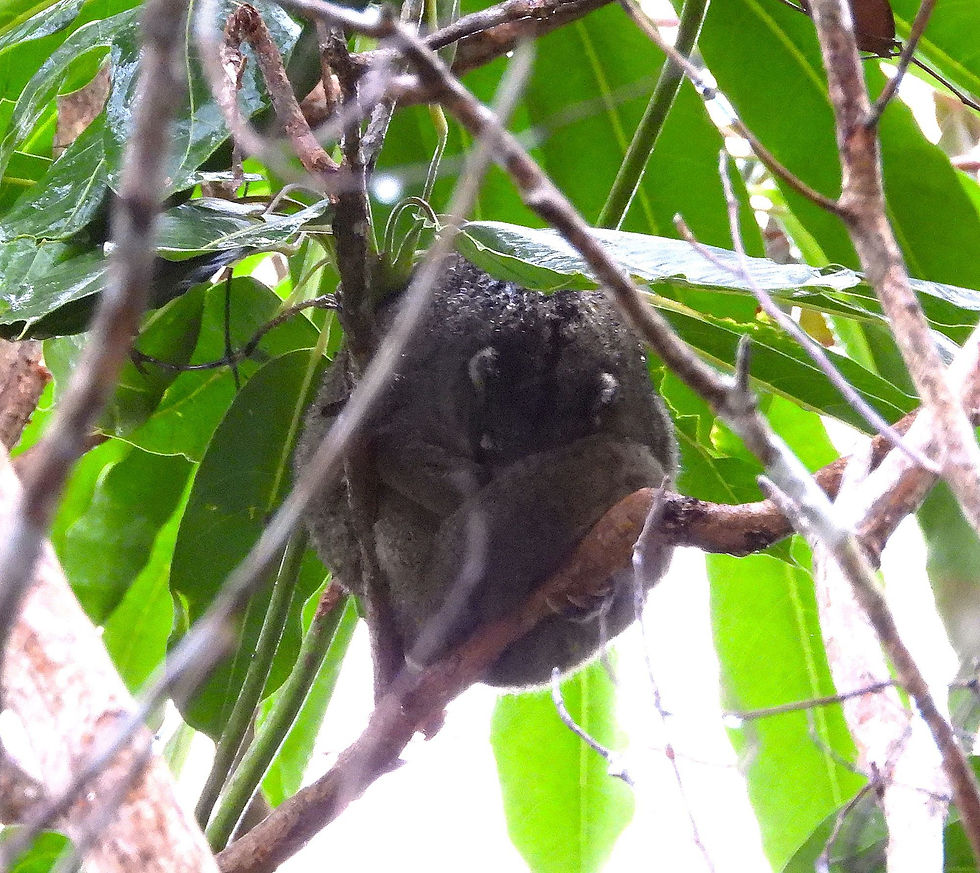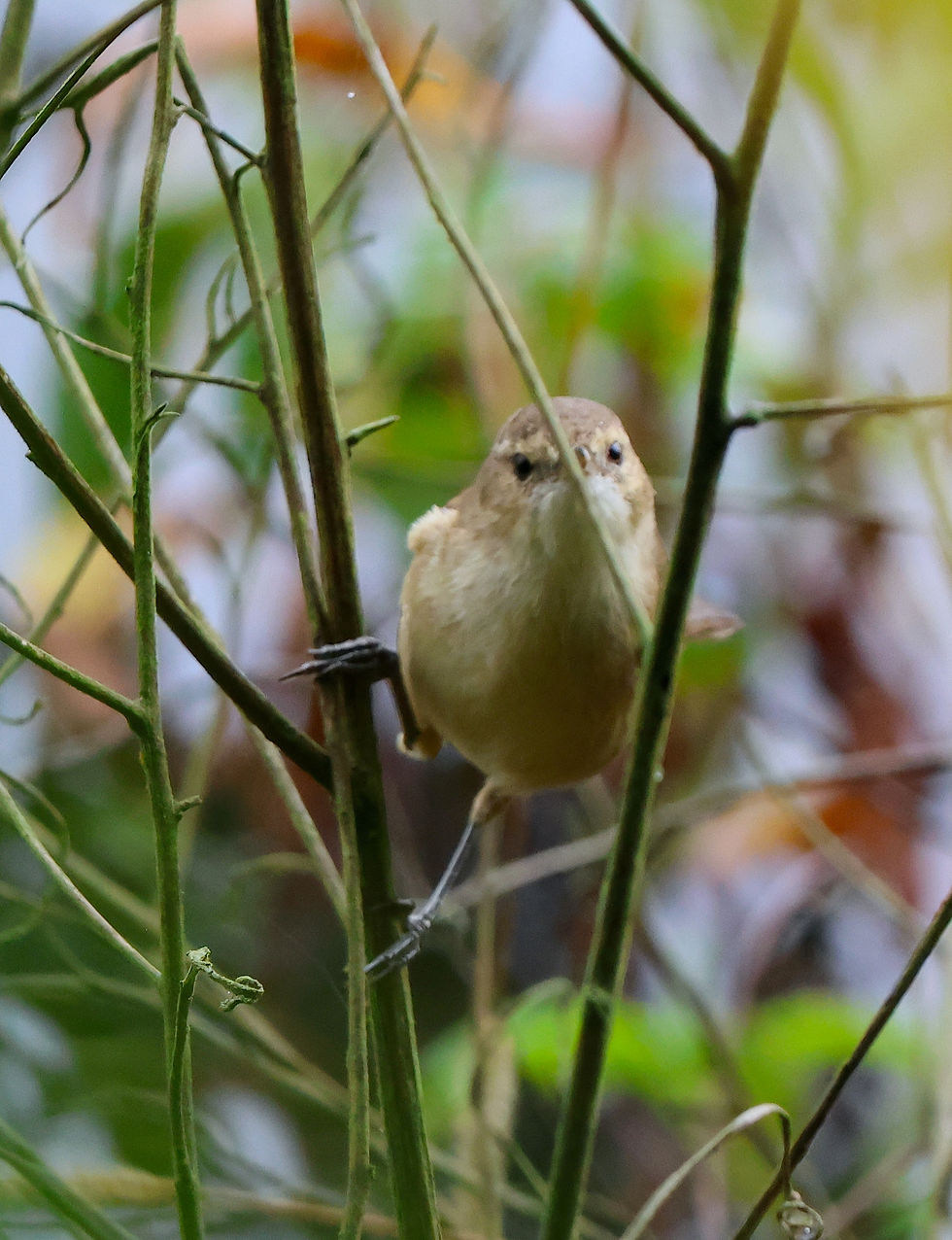Hasties Swamp Monthly bird survey: August 2025
- Peter Valentine

- Aug 6
- 5 min read
Peter Valentine | Conservation Officer
Wet start for birders at Hasties Swamp – with mammals wet and dry
On the 1st of August I suspect most of us wanted to stay home dry and warm: but instead, five of the faithful gathered at Hasties at 7:00 am to the sound of rain on the roof of the bird hide. There was a lovely misty feel to the day as well as rain. Photography was difficult because of the prevailing conditions at the time of our survey.

Suddenly we all got excited. There in front of the hide Louise spotted a Rakali swimming and diving in clear view. We even saw the white tail section as it dived.

A few moments later there was a Platypus swimming in front and diving in front of the hide.
Meantime, Delene noticed a dark ball in a tree between the hide and the carpark. Close inspection revealed a Green Ring-tailed Possum curled up in a ball fast asleep with just its small ears sticking out. Mammals taking over….and some of us might have been thinking how nice it would be to curl up dry and warm!

However, the real winners were the 800 or so Magpie -Goose, hunkered down in the rain along the far side edge. Smartly, I thought, they began to take off for some early morning feeding out in the paddocks, and by the time we left they were almost all gone.
We started counts of all the waterbirds and had quite a few species, even if numbers were low. One Dusky Moorhen was feeding just in front of the hide: they are usually on the other side of the Swamp or in the southern corner.

At one time the line up on the favourite log was: Australasian Darter, Grey Teal, Hardhead and Eurasian Coot.

But there was an element of musical chairs as Plumed Egret, Little Pied Cormorant, Pacific Black Duck and others came and went: but no Whistling-Ducks.

Then on the far side we noted a small flock of Plumed Whistling-Duck, including our leucistic version.
And despite an initial thought that there might be none, we did discover two Nankeen Night-herons, one on each side of the hide. Welcome back.

After about 40 minutes we noted a gradual decrease in the rain and a hint of clearing conditions, with mist lifting. Bush birds here we come.
A single Fairy Gerygone was feeding near the carpark (and singing) while the many Brown Gerygone and a few Silvereye seemed to be everywhere. Eastern Yellow Robins were nearly always in sight along the road south and we recorded four, but there might have been more.

Overhead we saw one, then two, then four Topknot Pigeons flying high up across the road, first from west to east, then east to west, then all six together heading east. But we missed the Emerald Dove.
The cranes were a bit frustrating: we could hear many of them calling and probably dancing, but out of sight behind a neighbour’s hedge. Four were seen but too far away to identify. We might leave them for Ed Bell to count next month!
The regular Bush Stone-curlew pair that has been at Hasties for many years went missing when the new people occupied the house opposite the hide, but one (or two) were heard calling in the distance so they are still present nearby.
The property opposite has been radically transformed, recently, with many trees removed and a solid fence erected with, sadly, barb-wire strands on the top. The idea of wildlife-friendly fencing is being taken up by many landowners, so perhaps the owners can be approached to wrap some white tape around the top barbs.
I was pleased to see that the fence-wire between the National Park and private land on the north end of the Swamp has been removed, as that will avoid repeats of the several bird deaths (including a Pelican) that have occurred in the past. There were three Australian Pelican at Hasties this morning perched on the posts!
Some flowers were beginning to bud at several places along the road, and these helped us record many species of honeyeaters including: Eastern Spinebill, Lewin’s Honeyeater, Yellow-faced Honeyeater, Bridled Honeyeater, Scarlet Honeyeater, White-cheeked Honeyeater, White-throated Honeyeater, and Macleay’s Honeyeater. Barbara’s sharp ears heard a distant Eastern Whipbird and we all enjoyed a beautiful male Golden Whistler with a female companion. Breeding may be on its way.
We watched a gang of four White-browed Scrubwrens scavenging along the roadside when Louise noted one adult feeding a youngster, so they have already produced at least one young.

The Large-billed Scrubwrens were also nearby and their party had at least five in it. Shrike-thrushes were calling and we saw at least three Rufous Shrike-thrush, and at least one Bower’s Shrike-thrush, with a suspicion of another.
Back towards the hide we were delighted to see a party of Red-backed Fairywrens with a well-coloured male, and then there was a gorgeous female Yellow-breasted Boatbill, nicely showing for Jen and photographed by Louise.

I went back to the hide just before we finished and I noticed a Whistling-Duck flying by. A hasty photo revealed that it was actually a Wandering Whistling-Duck, so at least one was present.

We called it a day slightly later than usual having achieved a list of 57 species, and each of us being rewarded by one of Jen’s delicious Amaretto biscuits. This is now such a much enjoyed tradition that I fear biscuit failure could see the Hasties survey cease!
Before I left I decided to check the usual place for Australian Reed-Warbler and was delighted to find not one, but two Reed-Warblers… perhaps love is in the air on the edge of the Swamp?


Check our events page for upcoming Hasties Swamp bird survey dates:




